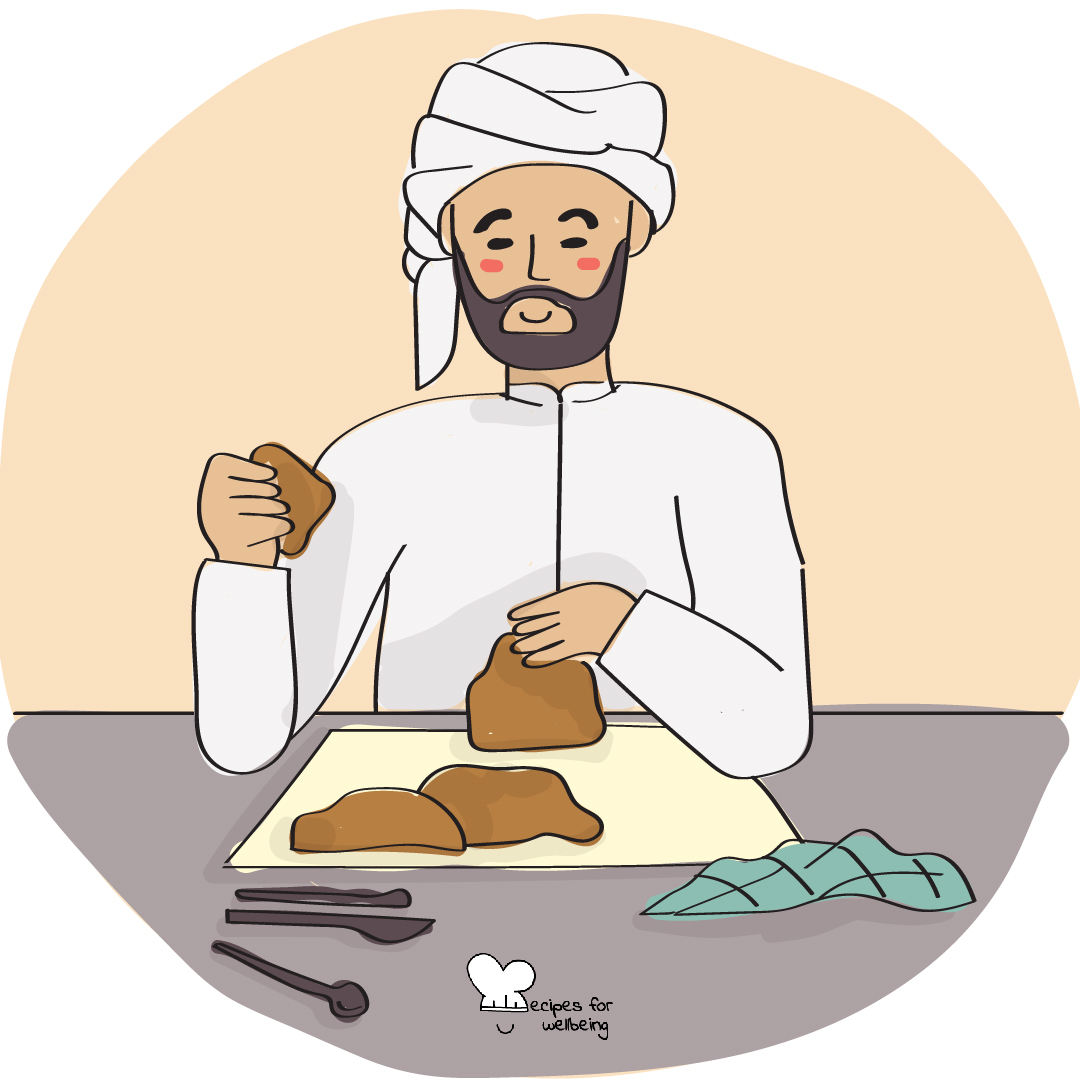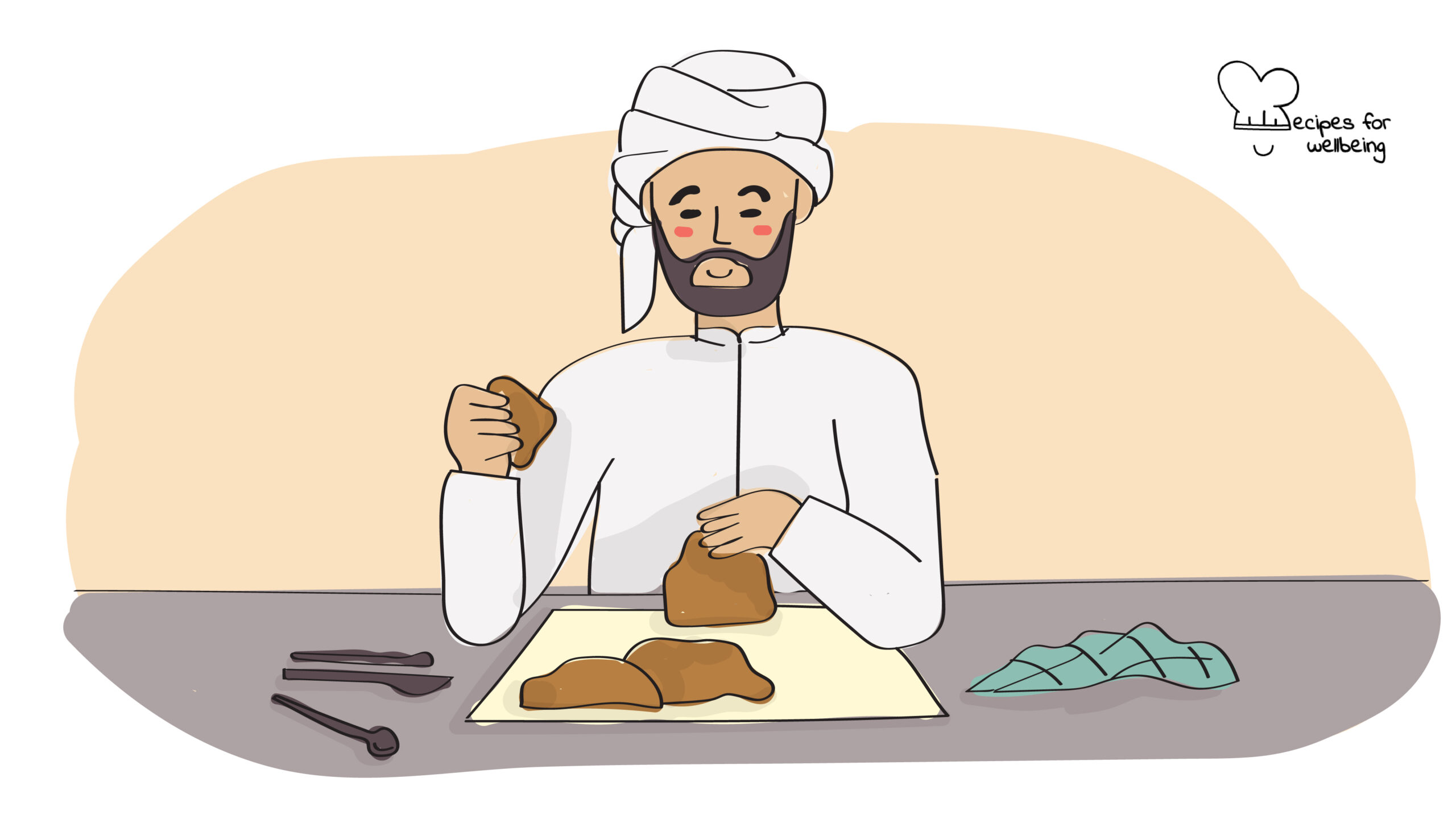
Catharsis through clay
Art is to be moved, to love, to hope, to tremble, to live. ―Auguste Rodin
👥 Serves: 1 person, 11-25 people, 2-10 people
🎚 Difficulty: Easy
⏳ Total time: 11-30 minutes
🥣 Ingredients: Clay (if artistic clay is not available, you can use home-made dough)
🤓 Wholebeing Domains: Awareness, Discomfortability, Positive Emotion
💪 Wholebeing Skills: Acceptance, Letting go, Mindfulness, Perspective, Reframing, Relief, Self-regulation, Stress management

Catharsis through clay
📝 Description
Processing tensions through kneading clay.
Clay can be a container for intense emotions, especially those of anger, grief, and loss. It enables a kinesthetic-sensory experience that slowly releases tensions without needing to process emotions intellectually or express them verbally. In fact, sometimes it is helpful to first attune to your body cues and sit with your emotions. And often, the simple process of kneading clay can lead to relief as heavy feelings are released. Finally, this process can also spark feelings of accomplishment and creativity.
Please note that while clay work can facilitate the release of tension, it may also further evoke intense feelings, or even lead to regression. We encourage you to be mindful of this as you work with clay.
The following activity has been designed by One Future Collective.
👣 Steps
Step 1 – Check-in (1’)
Close your eyes and look inwards. Bring attention to your breathing, your heartbeat, all the movements you can sense. How does anger (or whatever strong uncomfortable emotion you are experiencing right now) feel in your body? Where is it located in your body? It could manifest as a rapid heartbeat, sweaty hands, a headache, or a heaviness in your chest. Tune into these sensations.
Step 2 – Prepare (1’)
Gently open your eyes and take a piece of clay. Roll it between your palms. Pinch it between your thumb and fingers. How does that feel? Try kneading the clay as if it were a stress ball. Keep doing this until you feel satisfied. You could pull it, twist it, stretch it, or poke it.
Step 3 – Slow down (1’)
Once you feel satisfied, slow down your pace, and begin noticing how the texture of the clay feels – its temperature against your skin. Observe whether there is a change in the weight or intensity of your emotions, or whether they feel the same. Breathe in and out.
Step 4 – Mould (7’)
Slowly, begin moulding the clay. If your anger (or whatever emotion you’re focusing on) were a creature, how would it look? It doesn’t have to resemble real-life structures, you can be as abstract or realistic as you’d like. There is no right or wrong way. It’s just you, your emotion, and the clay.
Step 5 – Reflect (5’)
When you’re done, place the clay sculpture in front of you and reflect:
- How does your [emotion] look?
- Does it feel hot or cold?
- Where do you think this [emotion] comes from?
- Are there other emotions accompanying the main one?
- What do you think your [emotion] needs to let go of?

